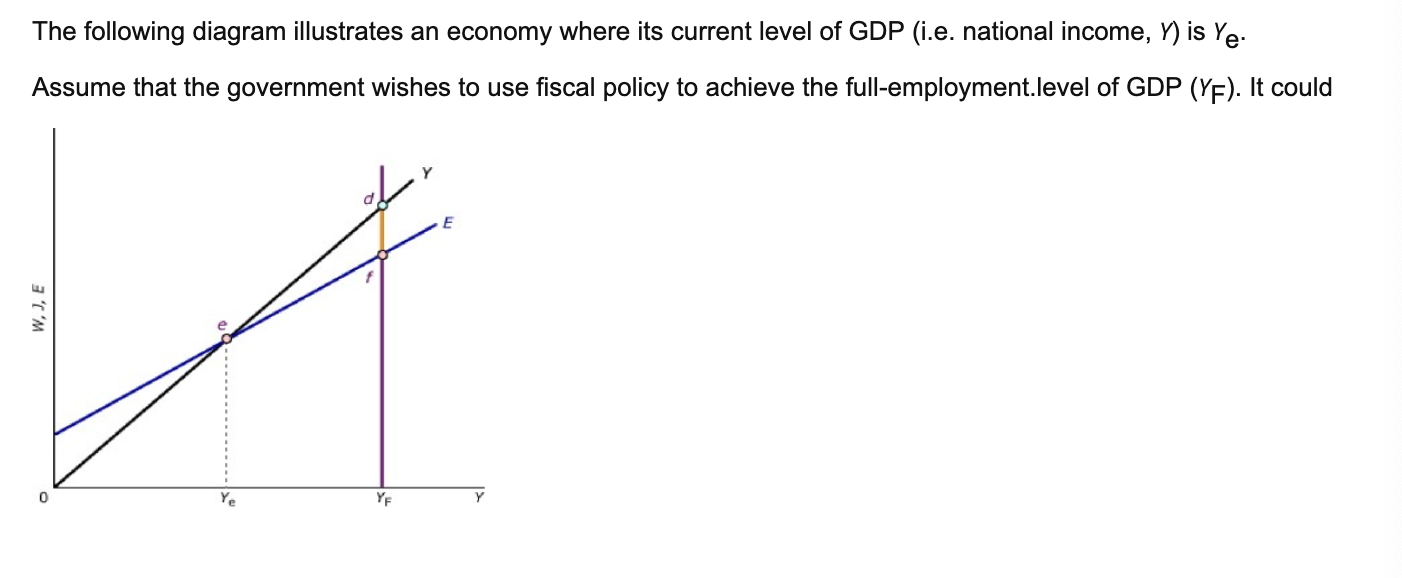Question
Under which of the following conditions is discretionary expansionary fiscal policy most likely to be effective? A. Public-sector expenditure increases and replaces private-sector investment. B.
Under which of the following conditions is discretionary expansionary fiscal policy most likely to be effective?
A.
Public-sector expenditure increases and replaces private-sector investment.
B.
Substantial time lags occur before tax cuts affect spending.
C.
Economic forecasts are inaccurate.
D.
Crowding out does not occur.
Which of the following instruments would never be used by a central bank to change the money supply?
A.
Bank rate
B.
Open-market operations
C.
The tax system
D.
Quantitative easing
Which of the following is an argument against interventionist industrial policy?
A.
The government may finance inefficient projects that would otherwise not be economically viable.
B.
Firms have no incentive to be efficient if they know they can rely on government subsidies.
C.
The provision of grants and subsidies distorts economic signals.
D.
All of the above
E.
None of the above
You are advising the Prime Minister. The Prime Minister feels that the current unemployment rate is too high and that the unemployment rate can be reduced if aggregate output increases. He/she wants to know what policy to pursue to increase aggregate output by 3 billion. The mpcd is 0.8. Which of the following policies should you recommend?
A.
Increase government spending by 2.4 billion.
B.
Cut taxes by 0.6 billion.
C.
Increase government spending by 0.6 billion.
D.
Cut taxes by 2.4 billion and to increase government spending by 2.4 billion.
An important instrument of supply-side policy has been
A.
interest rate policy.
B.
the imposition of wage and price controls.
C.
the monetary system.
D.
the tax system.
If the economy were booming, we would expect
A.
government expenditure to be high and tax revenues to be low causing a large budget deficit.
B.
government expenditure to be low and tax revenues to be low so that the government could pay off the central government debt.
C.
government expenditure to be low and tax revenues to be high so that the public sector might be running a surplus.
D.
none of the above.
An automatic fiscal stabiliser is
A.
a monetary or fiscal policy that aims to smooth out the business cycle.
B.
the tendency for exchange rates to adjust automatically to changes in the demand and supply of foreign currency.
C.
a tax or form of government expenditure that has the effect of reducing the size of the multiplier.
D.
the tendency for inflation to fall as unemployment rises.
If central government's spending exceeds its tax receipts, this would referred to as
A.
a budget deficit.
B.
negative public-sector net borrowing.
C.
a monetary deficit.
D.
national debt.
Which of the following represents an action by a central bank which has the effect of increasing the money supply?
A.
An increase in its repo rate
B.
Buying government securities in the open market
C.
Requiring banks to keep a higher liquidity ratio
D.
An increase in government spending
If a government were using fiscal policy for stabilisation in a ________ it would ________.
A.
recession, increase spending
B.
boom, decrease taxes
C.
recession, raise taxes
D.
boom, increase spending
Which of the following is an example of interventionist supply-side policy?
A.
Income tax cuts
B.
Deregulation
C.
Increased government expenditure on transport infrastructure
D.
Cutting unemployment benefits so as to encourage more people to accept job offers
According to those advocating market-orientated supply-side policies, if taxes are cut so that people have an increased incentive to work and businesses have an increased incentive to invest
A.
aggregate supply will increase, aggregate demand will decrease and the price level will decrease.
B.
aggregate supply will increase and the price level will increase.
C.
both aggregate supply and demand will increase and the price level will increase.
D.
aggregate supply will increase and the price level will decrease.
A central bank wishing to operate a tighter monetary policy might
A.
promote investment in other countries by domestic firms.
B.
reduce interest rates but use open-market operations so as to reduce the money supply.
C.
raise interest rates and use open-market operations so as to reduce the money supply.
D.
lower interest rates to encourage spending and discourage saving.

Step by Step Solution
There are 3 Steps involved in it
Step: 1

Get Instant Access to Expert-Tailored Solutions
See step-by-step solutions with expert insights and AI powered tools for academic success
Step: 2

Step: 3

Ace Your Homework with AI
Get the answers you need in no time with our AI-driven, step-by-step assistance
Get Started


